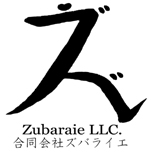AUDIO/VISUAL TUTORIAL of basic historic (as opposed to literary) knowledge of JAPANESE短歌(TANKA) poem (without any actual TANKA in it, sorry)
=====SCRIPT=====
■Historic basics of Japanese TANKA(短歌)■
●TANKA(短歌) as opposed to CHOUKA(長歌)
A TANKA(短歌) in Japanese literally means “a short poem”: as such, it is, or was, an antithesis to a CHOUKA(長歌), long poem. Since CHOUKA(長歌) became virtually obsolete after the publication in A.D.905 of KOKIN-WAKA-SHU(古今和歌集), the first of a long line of Japanese Imperial poetic anthologies, the term TANKA(短歌=short poem) practically meant nothing: with no other longer poems in existence, what’s the use of calling it short? That is why the Japanese people of the HEIAN era usually used the term WAKA(和歌) or YAMATO-UTA(大和歌) for the 5-7-5-7-7 letter/syllable verse.
●WAKA(和歌) or YAMATO-UTA(大和歌) in contrast to KARA-UTA(唐歌)
WA(和) and YAMATO(大和) both mean “Japan” or “Japanese” in contrast to something foreign, in literary context a Chinese style poetry called KARA-UTA(唐歌). Ancient Japan looked to China for political, cultural and even linguistic models: old official documents of Japanese government were written not in Japanese but in KANBUN(漢文=localized Chinese), rendering the command of Chinese language one of the requisites for official employment in the Japanese court, naturally leading to the superiority of KARA-UTA(唐歌=Chinese poetry) to YAMATO-UTA(大和歌=Japanese KANA poetry). But the tide was turning in favor of YAMATO-UTA(大和歌) after the abolishment in A.D.894 of KENTOU-SHI(遣唐使=Japanese academic envoy to Tang dynasty which became extinct in 907). Japan gradually ceased to look outside and began to turn its eye on things uniquely Japanese, culminating in the first Imperial poetic anthology wholly composed of YAMATO-UTA(大和歌) without any KARA-UTA(唐歌) in A.D.905 in the name of KOKIN-WAKA-SHU(古今和歌集); thus was begun the golden age of YAMATO-UTA(大和歌). Since the term YAMATO(大和) was innately nationalistic, requiring as its opposite something foreign, with the power of KARA-UTA(唐歌) gradually dwindling, YAMATO-UTA(大和歌) gave way to a less nationalistic appellation of WAKA(和歌)… this is still a dominant term in the present-day Japan, practically no man on the street using YAMATO-UTA(大和歌) any more.
●TANKA(短歌) in literary contrast to HAIKU(俳句)
Although the term WAKA(和歌) became predominant in Japanese consciousness, the original term of TANKA(短歌) came into use again after the birth of yet another (indeed, shorter) poetic style of HAIKU(俳句) in 17-letter (5-7-5 syllable) format towards the end of the 17th century. In today’s Japan, the 31-letter (5-7-5-7-7 syllabic) style poetry is usually called WAKA(和歌) but some people consciously call it TANKA(短歌) in technical contrast to the 17-letter (5-7-5 syllabic) style HAIKU(俳句). Since this introduction of mine sometimes includes HAIKU(俳句) in 5-7-5 format, it is logically reasonable to use the discriminating term TANKA(短歌) for 5-7-5-7-7 letter/syllable poetry. And the popularity overseas of the term TANKA for 5-7-5-7-7 English word(not LETTER) poems naturally demands that the same term be used herein instead of WAKA(和歌), in spite of the fact that the 31-syllabic TANKA/WAKA in Japan and the 31-word TANKA abroad are two different things…
